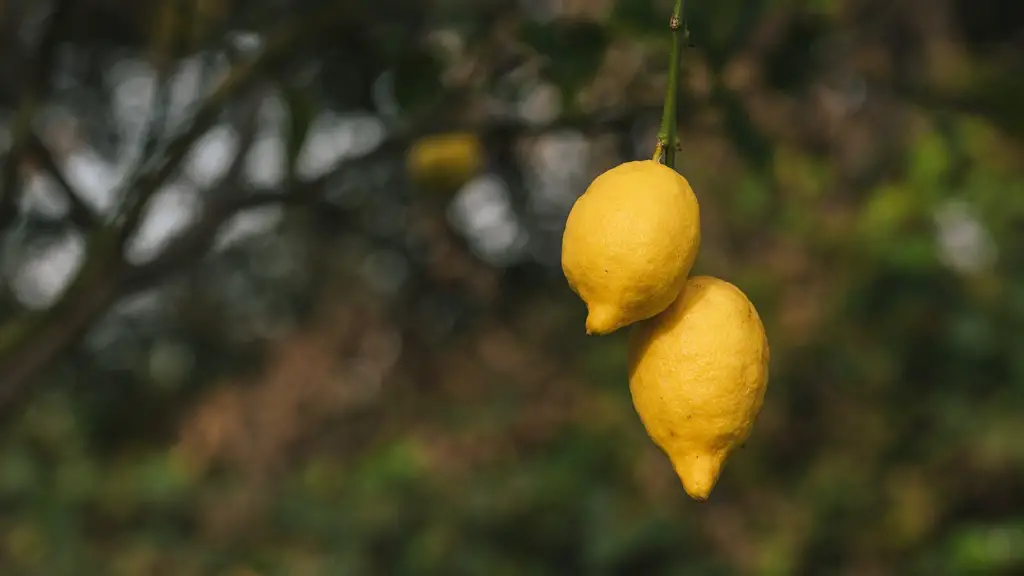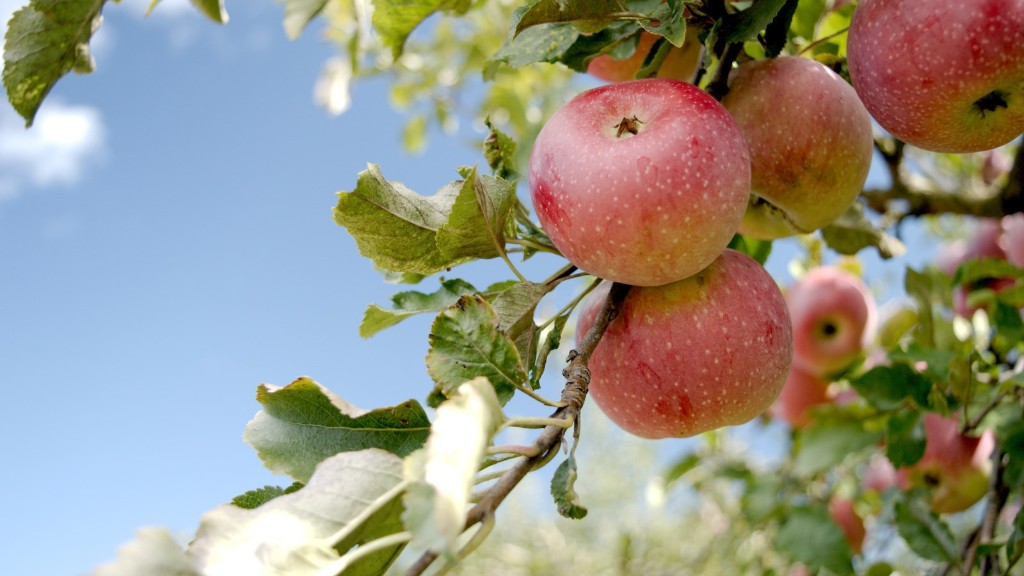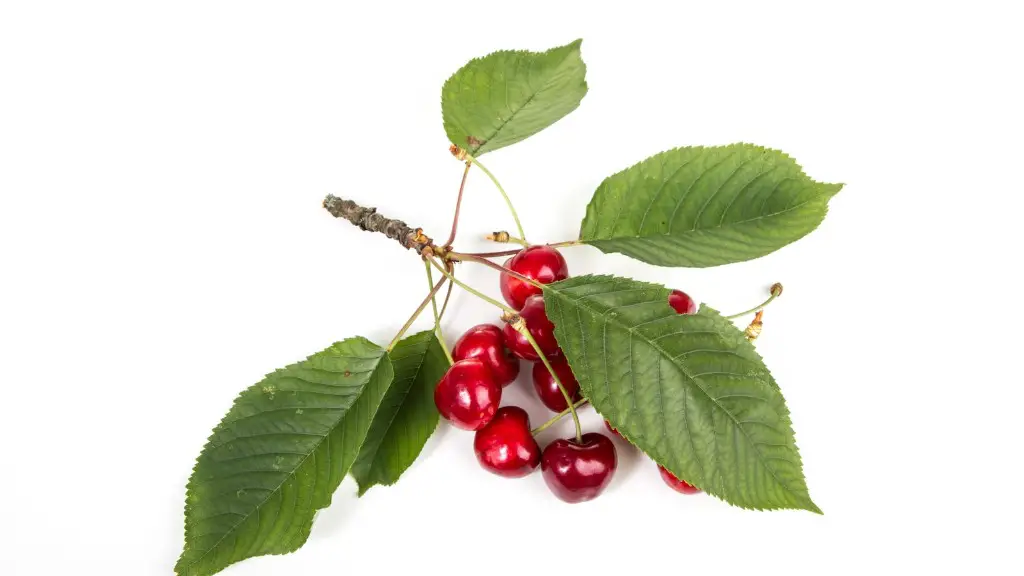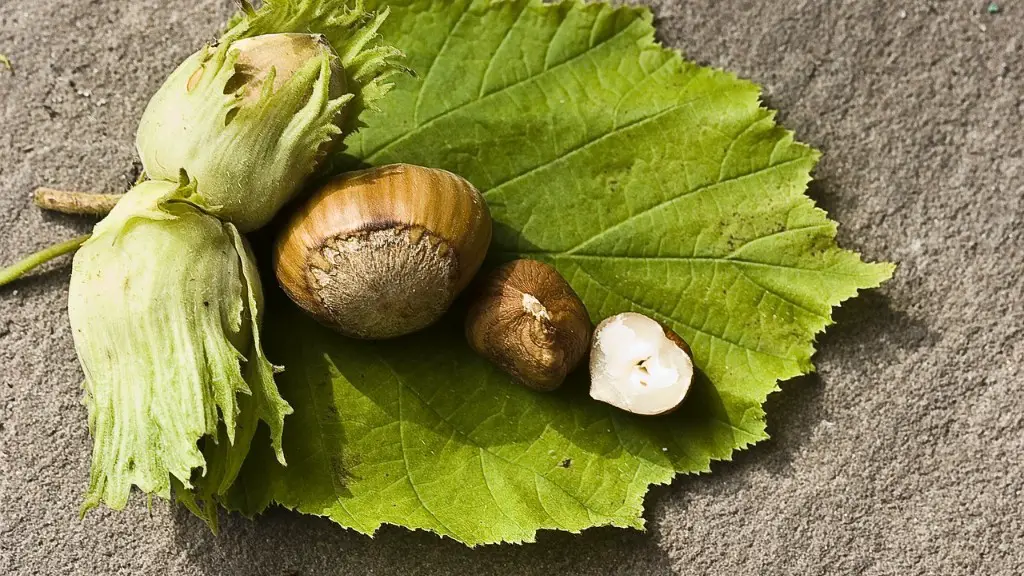Lemon trees are a type of citrus tree, and as such, they require frequent watering. The amount of water necessary depends on a number of factors, including the type of lemon tree, the age of the tree, the climate, and the time of year. In general, however, lemon trees should be watered about once a week, and more often during hot, dry periods.
It is important to water your lemon tree regularly to ensure its health and promote fruit production. However, you should be careful not to overwater the tree, as this can lead to problems such as root rot. The amount of water that your lemon tree needs will vary depending on the climate and time of year, but as a general rule, you should water the tree once a week, giving it enough water to soak the root system. If the tree is in a pot, you may need to water it more often.
How do I know if my lemon tree needs water?
If you’re not sure if your lemon tree needs to be watered, stick your finger into the soil. If the soil is dry to the touch 2-3 inches below the surface, it’s time to water.
If you have a lemon tree, it’s important to be mindful of how much water it’s getting. Too much or too little water can kill the tree. If you have poor draining soil, excessive watering can cause the tree to acquire fungus or disease. This may result in yellow curled leaves, decayed roots, and the tree may not recover. Be sure to check the soil regularly and water accordingly.
How much water does lemon tree need gallons
If you have a fruit tree that is two feet wide, you should give it two gallons of water each week. If the tree is five feet wide, you should give it ten gallons of water each week. If the tree is ten feet wide, you should give it fifty gallons of water each week.
Lemon trees are sensitive to over watering, so water your lemon tree only when the top two inches of the soil have dried out and then soak your lemon tree with a generous amount of water. Lemon trees require more water in the Summer and should be watered less often in the Winter to avoid root rot.
What does overwatered lemon tree look like?
If you notice that your tree’s leaves are yellow or cupped, it may be a sign that you are watering it too often. Try giving your tree water less often and see if the leaves perk up. Citrus trees prefer infrequent, deep watering to frequent, shallow sprinklings.
A watering schedule is important to keeping your lemon trees healthy and happy. Water your lemon trees once a week or bi-weekly, depending on rainfall in your area or your humidity indoors. If you’re not sure when to water your lemon trees, just check the top 2 inches of soil.
What are signs of overwatering citrus trees?
Overwatering trees can lead to a number of problems including:
-The area around the tree is constantly wet
-New growth withers before it’s fully grown or becomes light green or yellow
-Leaves appear green but are fragile and break easily
If you notice any of these signs, it’s important to take action to correct the problem. Otherwise, your tree may eventually die.
Citrus trees need to be watered evenly and not allowed to dry out completely for more than a day. If a citrus tree is left dry for more than a day, the damage will not be visible until it is watered again. This may cause confusion when trying to determine how often to water the tree.
Do lemon trees need full sun
Lemon trees require full sunlight for proper growth, but can tolerate a range of soils including poor soil. Most lemon trees prefer well-drained, slightly acidic soil. Lemon trees should be set slightly higher than ground level to ensure good drainage.
Water your Meyer Lemon Tree regularly to keep the soil moist, but not waterlogged. Check the soil weekly and water the tree if the top 2 inches of soil are dry to the touch. Slowly pour water into the pot until it reaches the 20-second mark, or until you see water running out of the bottom of the pot. In general, Meyer Lemon Trees need water every one to two weeks.
What time of day should you water fruit trees?
The best time to water your plants is in the morning or evening. This gives the roots a chance to absorb most of the water.
This is the easiest watering method that I have come across. It is very simple and effective. You just need to drill three 3/16-inch holes in a 5-gallon bucket, fill the bucket with water, and place it near but not right up against the trunk. The bucket will provide a slow, deep soaking in the root zone, which is best for the tree.
What is the problem with yellow leaves on lemon tree
There are a few reasons why leaves may turn yellow in winter, but the most common reason is that the tree is cold. Lemon trees prefer a warm subtropical climate, but will still grow in cooler climates if sheltered from cold winds and cold winter conditions. When the tree is cold, its roots are unable to absorb enough nutrients to keep the leaves green, and in turn go yellow.
Lemon trees need certain nutrients to stay healthy and produce fruit. If they are deficient in these nutrients, then it can cause their leaves to curl, droop and turn yellow. Lemon trees are heavy feeders and need to be fertilized frequently so they can produce fruit.
How do you revive a sad lemon tree?
If you notice that some of the roots on your plant have rotted, it’s important to take action immediately. Keep the plant in a cool position and water it carefully, hoping that it will be able to make new root growth and recover. If you’re not sure why the plant is declining, remove it from its pot and check the roots. This will help you determine whether the plant can be saved or not.
There are seven problems that are commonly associated with lemon trees. These include citrus canker, sooty mold, botrytis blight, anthracnose, lemon scab and brown spots.
Citrus canker is a bacterial infection that causes lesions on the leaves of lemon trees. Sooty mold is a fungus that grows on the leaves of lemon trees and causes black moldy spots. Botrytis blight is a fungal infection that causes fuzzy gray mold and brown spots on the leaves of lemon trees. Anthracnose is a fungal infection that causes tan spots with dark outlines on the leaves of lemon trees. Lemon scab is a bacterial infection that causes brown scabs on the leaves of lemon trees.
These problems can be addressed by pruning infected areas, removing affected leaves, treating with fungicide or bactericide, and increasing airflow around the lemon tree.
How do you care for a potted lemon tree
So the trick is to just recreate nature. Water it really well. Let it drain really well. Let it dry.
Drinking lemon water is a great way to improve your health, but it’s important to know that the time limit for drinkable lemon water is two or three days. After that, the lemon will lose its flavor and firm texture. So be sure to drink your lemon water right away and enjoy the benefits!
Warp Up
It is important to water your lemon tree regularly to keep the soil moist but not soggy. New trees should be watered every 7-10 days during their first growing season. Once established, trees should be watered every 14 days during the spring and summer months. Watering less frequently in the winter months is fine.
The proper amount of water for a lemon tree depends on the tree’s size, age, and the weather. A young tree needs more water than an older one. Hot, dry weather requires more watering than cool, wet weather.




